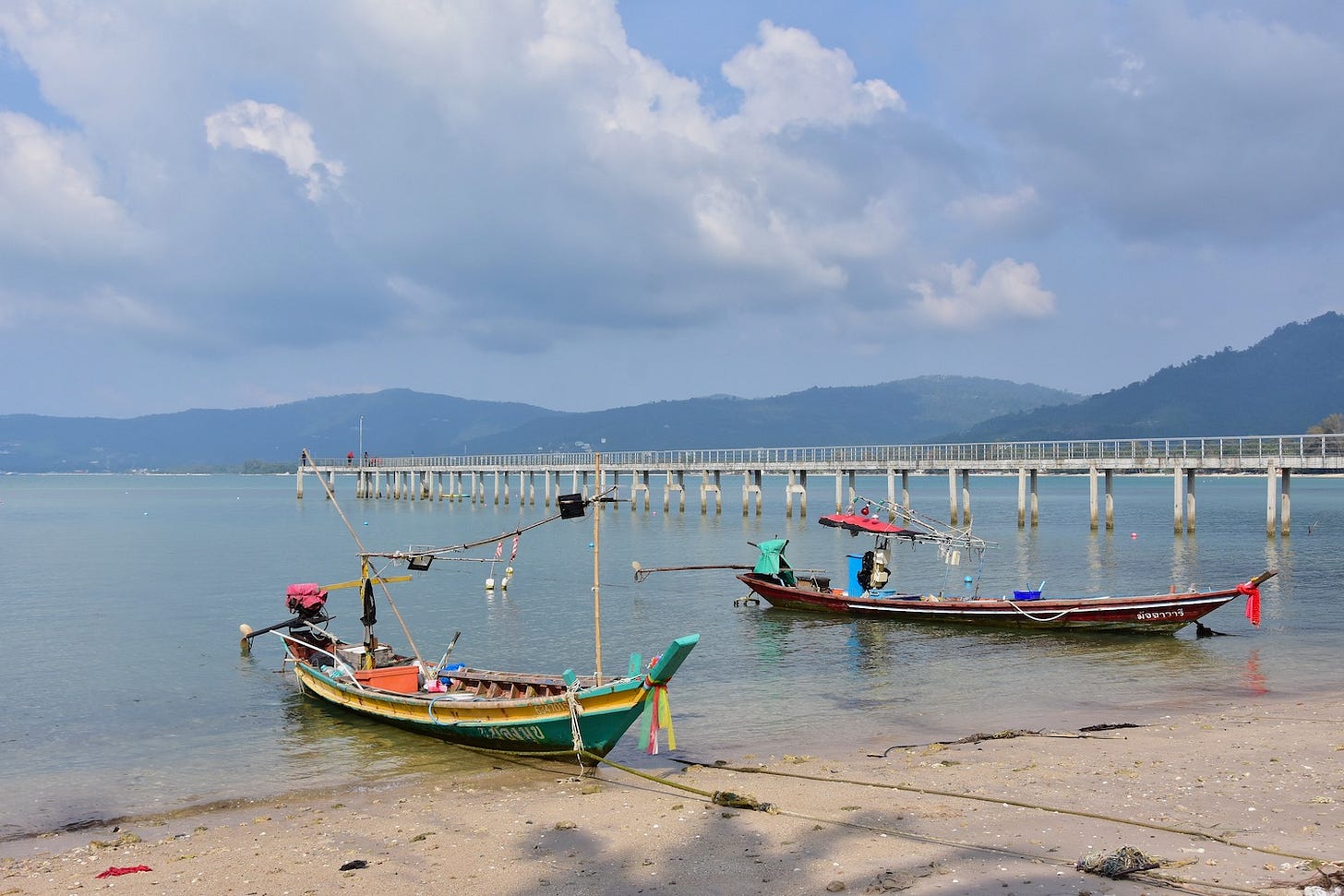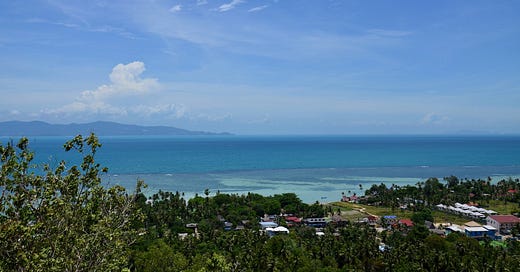T.I.C.D.: Mu Ko Samui (Part I: Ko Samui & Ko Taen)
The popular southern half of the Samui Archipelago, condensed.
Welcome back to the Thai Island & Coastal Directory, a book-in-progress that promises to be the most complete guide to coastal Thailand ever written in English, covering more than 900 islands and all 24 coastal provinces. An upgrade of $5 USD monthly gets you the T.I.C.D. and many other in-depth articles.
T.I.C.D. ticker: So far, we’ve covered 835 islands and 255 notable coastal areas in 49 sections of the Thai Island & Coastal Directory.
(To view all previously published sections, see the welcome page or the working Table of Contents — or click T.I.C.D. from the homepage menu.)
Entering Surat Thani province…
Surat Thani has 124 islands in total, making it Thailand’s third most island-rich province, after Krabi and Phang Nga. Fully 100 of these islands come in the province’s 2 main archipelagos: Mu Ko Samui and Mu Ko Ang Thong.
Mu Ko Samui
The Samui archipelago’s 43 islands span some 90 km from top to tail, forming the heart of the Mid Southern Gulf’s tourism scene. Its 3 main islands — Ko Samui, Ko Phangan, and Ko Tao — are joined by the Ko Taen group in the S, while the separate but related Mu Ko Ang Thong lies right next door to the W.
Mu Ko Samui is probably the broadest-ranging of all Thai archipelagos in terms of the variety of travel options included. Though extended trips encompassing all 3 main islands are easy and popular thanks to the year-round ferries, many travelers end up settling on one or two islands that best fit their personality or interests — be it diving on Ko Tao, yoga on Ko Phangan, or luxury on Ko Samui.
But those who know this ‘big 3’ in depth find that trying to put each island into a box is a fool’s errand. They can all color experiences in many shades, based on choices. For example, laid-back beaches like Chaloklum and Thong Nai Pan buck the partying label so often applied to Ko Phangan. On Ko Samui, spartan backpacker lodgings often stand side by side with the super-lux resorts.
As two of Thailand’s 5 largest islands, Ko Samui and Ko Phangan both deliver backroads and hiking trails amid extensive mountainous interiors sporting both jungle and agriculture. Both also come with heavily developed beaches that place them, along with Ko Tao, among Thailand’s 10 primary tourism islands.
Administration of Mu Ko Samui is split in half — or thirds if including DNP oversight. Koh Samui district covers Samui and the entire Ko Taen group, where the 2015-established Hat Khanom - Mu Koh Thale Tai NP oversees the undeveloped Ko Wang twins and is trying to get hold of Ko Rap. Meanwhile, Koh Phangan district consists not only of Phangan and its satellites, but also Ko Tao and Ko Nang Yuan. These are two of the 10 Thai districts composed fully of islands.
The archipelago’s other NP, Than Sadet - Koh Phangan, ensures that Phangan’s E mountains remain blanketed in jungle rather than villas. Despite having no NPs itself, Ko Samui offers several terrific waterfall and viewpoint hikes.
A handful of powerful families control much of the land on all 3 of the main islands, which some say operate with a strong measure of local autonomy when it comes to things like economic management and law enforcement. Violence is not common but has occurred, usually in nightlife situations. There is a tragic history, unfortunately, behind Ko Tao’s ‘Murder Island’ reputation.
Mu Ko Samui also boasts over 25 dive sites, with most found off the king of all Thai scuba islands: Ko Tao. Others — including a few in the N Ang Thongs plus solitary Sail Rock — give divers places to plunge between Tao and Ko Phangan. Some diving is also done off Phangan’s NW coast and some of Ko Samui’s satellite isles, but both serve more as diving bases with few notable scuba sites of their own.

Islands below are arranged roughly from N to S.




